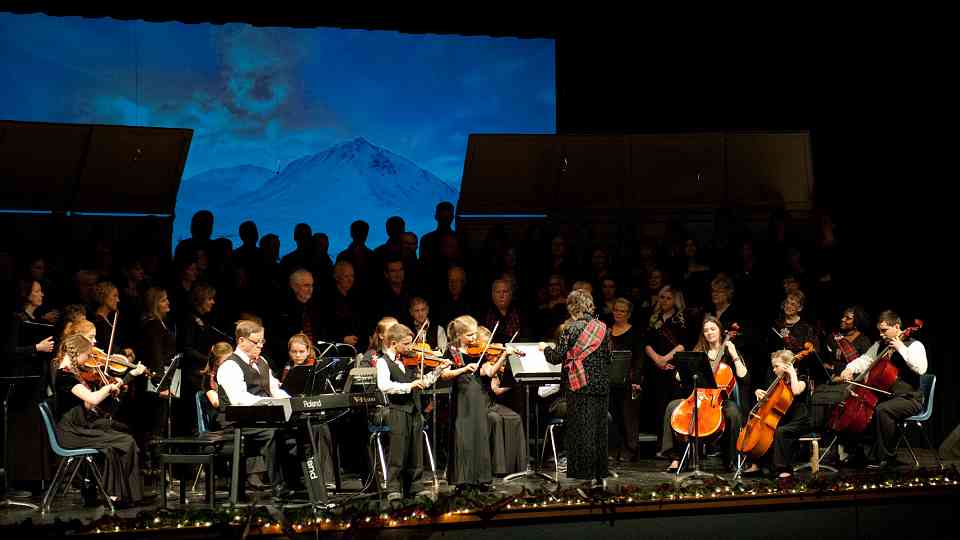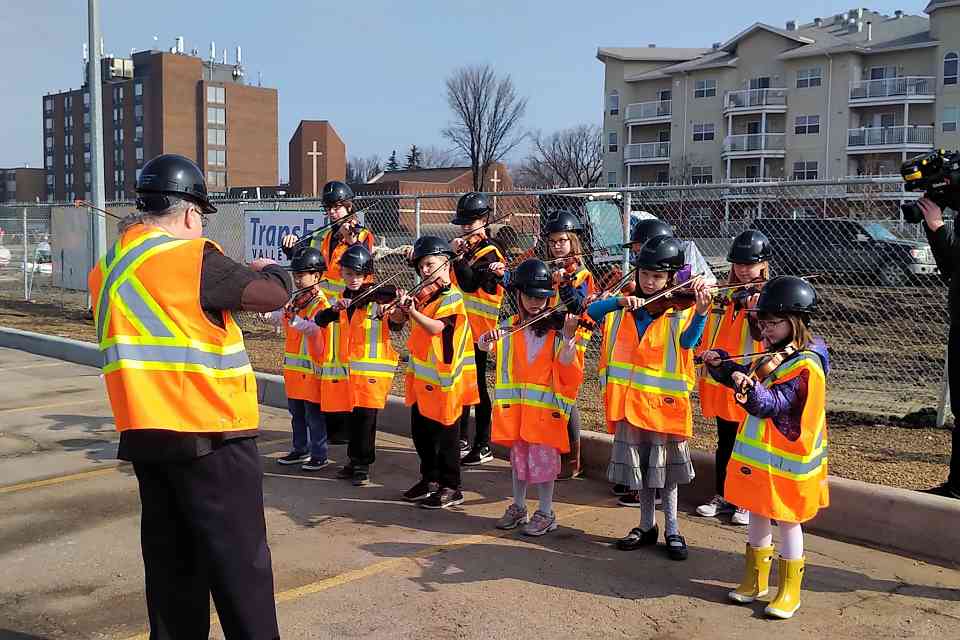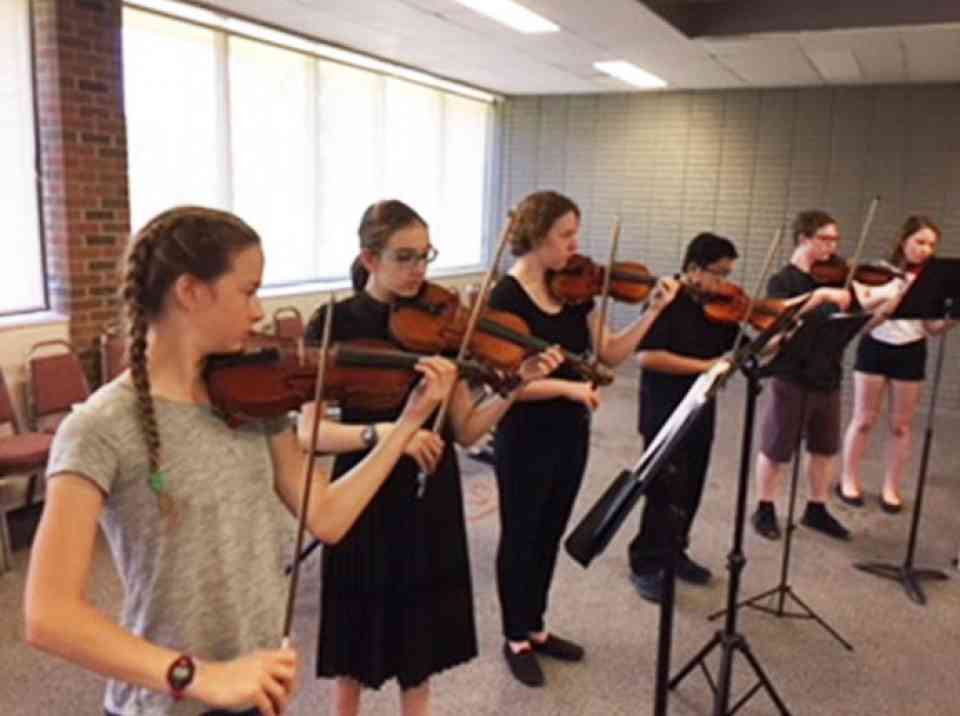|
by Dr. Mary-Elizabeth Brown - Montréal, Quebec
“Beautiful tone, beautiful heart” is one of Dr. Suzuki’s most iconic quotes. The very idea of a resonant and ringing tone is a staple of every Suzuki lesson, but how to we continue to develop this beautiful sound in the time between our final bow and the next week’s meeting? TALK ABOUT IT! Choose a time when you are both relaxed and away from your violins to listen together (the car is a great place to start) Listen to a favourite recording (this could even be one of your Suzuki pieces) Use the talking points below to start a discussion with your son or daughter, keeping in mind that there are no correct answers.
Don’t be afraid to repeat this exercise as your child grows and matures. It’s a joy to see their ears develop, and such discussions can be a good way to build bridges as you discover each other’s ideas. IN PRACTICE Tonalization Through totalization, we focus on the idea of producing a beautiful sound. Before playing, take a few seconds with your child to imagine the sound first. Use the words from your discussion to help cue their memories. Remember: forming sound comes from the inside out and not the other way around. Once you have established an idea of sound, play the exercise all the way through and invite your child to self-assess: did it sound like the tone you imagined? How would you change it? Remember to keep these discussions positive and collaborative in your approach – even if one harsh or judgmental word can cause a child to shy away. Review Our review repertoire gives us access to a library of beautiful music that is mastered and played with ease. When we are not worried about surmounting new technical challenges, we are better able to listen, hear, self-assess and make positive changes in our daily pursuit of a beautiful tone. Working Pieces Working pieces present new challenges that require concentration, but the idea of a beautiful sound should never be far from our minds as parents and teachers. While being attentive to the idea of “flooding,” we must continue to look for opportunities to encourage the beautiful sound. For example, as each preview section has become comfortable, we can propose the added challenge of playing the passage with a beautiful tone. To all musicians, even to the youngest violinist, tone is closely related to our identity as people. Working on tone therefore requires sensitivity on the part of the participating adult(s) in the room. Through discussion, active listening and self-assessment and constant, gentle encouragement, we can cultivate a beautiful tone the whole week long.
0 Comments
Borealis Suzuki Winds Institute
Edmonton, AB Great Lakes Suzuki Flute Institute Guelph, ON Institut Suzuki Montréal Montreal, QC Langley Community Music School Suzuki Workshop Langley, BC Newfoundland and Labrador Suzuki Institute St. John’s, NL River City Suzuki Piano Institute Edmonton, AB Southwestern Ontario Suzuki Institute Waterloo, ON Suzuki Valhalla Institute New Denver, BC by Nicole Wilton - Saskatoon, Saskatchewan
Two of our local Saskatchewan teachers went to the “Piano Basics” workshop in Orange County, California this past February. Here is their summary: Stela Popa was happy to hear that there were two Japanese teachers in California who were teaching much like Dr. Kataoka, whom Popa had seen many years ago. Stela enjoyed watching and having lessons where body movement and use of hand, wrist, and arm were all discussed. The focus of this was how to produce good long tones and how to play big chords. She is going to try this all herself as well as with her students! Lana Ramsay stated that she was searching for improvement in her own playing and tone and was therefore happy to attend a workshop on these “Basics.” At the workshop, teachers had lessons in the morning, and students attended in the afternoons. The main goal was working on beautiful tone, and making a difference in the lives of children. Key benefits and take-aways were to become aware of the subtle ways that we (as teachers) interfere with creating beautiful tone… and reminded us how to use body, arm and fingers to create that tone. Both Stela and Lana felt they came away with keener ears and practical ways to help their students. In other Saskatchewan news: Piano teacher trainer Nicole Wilton will be hosting a Unit 1 course in her Saskatoon studio in late June 2019. For details, please email her at [email protected] or go to www.wiltonmusic.com by Rhonda McEachen - Edmonton, Alberta
Edmonton Suzuki Piano School (ESPS) was established as a non-profit society in 1977 and continues to thrive today. We are a vibrant piano community with 13 Suzuki trained teachers that provide private and group lessons to our families. Our major events include the Fall Workshop (October) and Spring Festival (March/April). Visiting students and teachers are more than welcome to participate. We are organizing the River City Suzuki Piano Institute in July 2019, where teacher training in Volume 6 will be taught by Gail Lange For further information on the Summer Institute or any of our programs, go to edmontonsuzukipiano.ca  By Flory Godinez - Creston, British Columbia “We’re Canadians—we can do this” This idea of rising to the challenge is what I’ve seen first-hand in my Suzuki string students. When we moved to the Creston Valley three years ago for my husband’s retirement, this American Suzuki teacher had no idea what awaited us, musically. The local string teachers invited me to coffee and I learned that one violin teacher was retiring, one was moving to the Maritimes, and the other two were cutting back their studios. Suddenly I had a studio ranging from beginners through Suzuki book 8. As I worked with the parents and children on tone, technique and interpretation, the opportunity to further develop their music reading skills became apparent. We progressed from sequential sight reading to small ensembles. Then with the addition of viola and cello, we moved to graded orchestra music. I have a library of U.S. graded school orchestra music which is graded differently than the Royal Conservatory system.
In August of last year I was approached by Anita Stushnoff, conductor of the 82-voice Blossom Valley Singers, to accompany the community choir on their weekend of three concerts entitled “A Celtic Christmas.” One piece was very easy and below the level of the students. The other orchestration was unidiomatic for strings and required re-writing. Again that Canadian “can do” spirit prevailed and they played beautifully. The Creston Valley Youth Orchestra was born! What is the value of a youth orchestra to a Suzuki program? In my two years study with Dr. Suzuki in Japan I also observed Mr. Yamashita’s massive student orchestra in Suwa city. So I learned of the precedent for an orchestra in a Suzuki program right in Japan. As students reach the crucial early teen years when many drop out of music, a student orchestra is a powerful music team that can capture the love and desire to make music together with life-long friends.  by Thomas Schoen - Edmonton, Alberta The Schoen Duo Studio celebrated Bach in the Subways on March 23, 2019. There is no subway station in our neighbourhood, but there is a new LRT station under construction! TransEd gave us permission to play some Bach on the actual construction site. Here is Thomas and a group of his students serenading the construction workers. After a minuet or two, we moved into the Bonnie Doon shopping mall where we were joined by Kathleen Schoen’s flute and recorder students and cello students of Janet Dougan for a flashmob and more music at the LRT presentation centre. by Kathleen Schoen - Edmonton, Alberta
Borealis Suzuki Winds Institute will be hosting Creative Ability Development (CAD) Teacher Training with Alice Kanack, August 19—23, 2019, in Edmonton, Alberta, Canada. Alice is the author of the Fun Improvisation books for Piano, Violin, Viola, and Cello, Improvising String Quartets, Musical Improvisation for Children, and Baselines & Fantasies. She is currently developing a new book in the series for young flute players. Her approach uses musical improvisation to develop full engagement in the creative process with students (and teachers!) of all ages and levels. Not only do the students enjoy her improvisation activities very much, but the freedom and ease that they develop through this work carries over into the standard repertoire. My students are now quite happy to improvise baroque ornamentation or a cadenza to a classical concerto. This CAD Teacher Training course is open to teachers of all instruments. Register at this link: https://suzuki-flute-recorder.ca/registration/teacher-registration-form/ by Merlin B. Thompson - Calgary, Alberta
Have you ever noticed that around the time your students are in Junior High School, they seem to reach a threshold in their music studies? After years of consistent progress throughout elementary school, they seem satisfied with their music studies and want to continue, yet they’re often content with just working on one piece even over very long periods of time. So, what are the options? Composition, improvisation, ensemble music? How about something that will amplify every one of your preteen/teen students’ relationships with music!! Beginning in January 2018, I decided to respond to the Preteen/Teen Threshold by doing something completely new – engaging my preteen/teen students in examining their own Everyday Musical Connections through a Project-Based Learning approach. Everyday Musical Connections (EMC) is the descriptor I use to capture the breadth and depth of every person’s unique relation with music. At times, music is a companion, diversion, interruption, refuge, catalyst, and reminder. Project-Based Learning (PBL) is an established educational approach widely used in classroom settings. PBL is all about organizing learning experiences that prompt students’ active participation in their own learning, rather than giving students a series of facts to learn for an exam or tasks to master for a performance. Over the past year and a half, I have included EMC projects with impressive results for my preteen/teen students. Each week, we spend 5-6 minutes of our lesson time in fine-tuning their investigative process. Students present their finished projects at informal home concerts and formal public concerts. Parents are typically blown away by the insight and sophistication of students’ presentations. Thus far, students’ explorations have included analysis, video creation, audio presentations, PowerPoint, transcription, personal anecdotes, and live demonstration. The topics they choose are as varied as their own personalities. Everything from – what makes a good song good, to the evolution of the Batman musical theme, to how does music affect work habits. Comments from students after they finished their projects – “I learned that I know more about music than I thought.” “Now, when I need to make an analogy at school, I take examples from music.” “I loved working on something that actually belonged entirely to me.” I appreciate the way EMC explorations serve to amplify students’ own musical persona, to shine light on the depth of their relation with music, and highlight music as an important part of their lives. Students also exercise their disciplinary knowledge of music and strengthen the higher-order skills of critical thinking, problem solving, creativity, analysis, communication, and reflection. In a nutshell – using EMC projects is positively the most exciting and music-affirming activity I’ve ever employed with my preteen/teen students!! It’s completely transformed my studio! To find out more about Everyday Musical Connections and Project-Based Learning – please visit merlinthompson.com and click on Everyday Musical Connections (https://merlinthompson.com/project-based-learning/). by Mélanie Grenier - La Jacques-Cartier, Québec
In May 2018, 50 violinists and cellists from the Suzuki group, “Jeux d’archets”, experienced their first flash mob. Participants included beginners to very advanced students between the ages of 3 and 20. The idea of giving them such an experience comes from my philosophy of always seeking to provide my students with stimulating, varied and rich learning experiences. Having participated in a group of artists in my region, I realized there was great potential for a flash mob in a variety of locations, and that it would be a great way to integrate with the cultural and economic activities of the region. I started my efforts by asking my city for support. The regional county municipality of La Jacques-Cartier provided us with funding for two buses. We used the first bus all day for the older ones, and the other one in the morning for the younger ones and their parents. I spent a lot of time and effort preparing for the event. I had to contact all the schools, take note of the space and time restrictions, make an itinerary, contact everyone again, organize the logistics with the students and families, and choose the repertoire that would need to be played from memory. And we desperately hoped for a sunny day! We played at different places: a church square, an environmental fair, a grocery store, a golf course, a bakery, the grounds of an estate, a restaurant famous for brunch, a hotel, a park. At some locations, I separated the larger group into two or three smaller groups. The older students had some flexibility in their repertoire when they played without the younger ones in the afternoon. They were at their most energetic and enthusiastic, and could almost play without me by the end of the day! The people we surprised were moved, attentive and still wanted more… Almost all the merchants were accommodating and embarked on this wonderful adventure with great interest. The students, especially the older ones, had a blast! They liked it so much that they didn’t bother putting their instruments away between one place and the next. They played non-stop on the bus; somebody would start playing and the others would follow! They played through the entire Suzuki repertoire as well as other repertoire, such as Pachelbel’s Canon, Tzena and their group repertoire. All told about 6 hours of violin playing that day, and they didn’t want to stop! We broke up the day into two parts, with a stop at a picnic area. The parents had prepared a lunch, and we ate, had a rest, and relaxed by playing a friendly soccer game. What a great musical day for these Suzuki families! I am going to organize a second flash mob, which will take place on May 25, this time in the old quarter of Quebec City. We will prepare some very nice surprises for the public and for the students who will participate! To be continued!  by Laurie Mitchell - Durham, Ontario There are advantages and disadvantages to living outside of a big city. Fewer opportunities without long drives is definitely a disadvantage, so the teachers east of Toronto have worked together to create an affordable summer program in our own neighborhood. The amount of learning that takes place (for students and teachers alike) in one week is amazing and that is partnered with long-lasting gains in motivation! http://www.durhammusiccamp.com |
 RSS Feed
RSS Feed